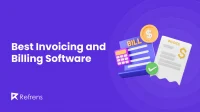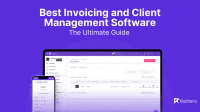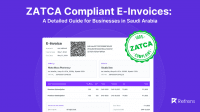In the business world, invoicing is a crucial element in facilitating the payment process. However, one aspect often overlooked is the timing of invoice dispatch. The decision on the best time to send invoices can greatly impact the speed and ease of payment, thereby influencing your business cash flow and client relationships. Utilizing invoicing software can streamline this process, ensuring that invoices are sent out at optimal times, reducing delays, and improving overall efficiency.
Factors Influencing the Best Time to Send Invoices
When determining the optimal time to send an invoice, several factors should be taken into consideration:
1. Nature of goods or services provided:
The type of product or service your business offers significantly impacts when you should send an invoice.
- For one-time services or goods, like event planning or selling a piece of artifact, it’s usually best to send an invoice immediately after the service is completed or the goods are delivered.
- For ongoing services, like consulting or social media management, it’s typically more practical to invoice on a regular cycle, such as weekly, bi-weekly, or monthly.
- If you operate on a project basis, like content writing or software development, it’s common to invoice based on project milestones.
2. Industry practices
Each industry has its own norms when it comes to invoicing. Understanding these practices can guide your invoicing schedule, but it’s also important to consider your specific business needs and client preferences. Familiarizing yourself with invoicing basics can help you tailor your approach, ensuring that your invoicing process is both efficient and effective. By leveraging the best billing software, you can adapt to industry standards while accommodating unique client requirements, ultimately enhancing your cash flow management.
3. Client preferences and expectations:
Considering your client’s needs and preferences is crucial for maintaining good business relationships and ensuring timely payment. Communicate with your clients and understand their preferences to find a mutually beneficial invoicing schedule.
4. Contractual agreements:
In many business relationships, the invoicing timing is explicitly stated in a contract. It’s important to adhere to these agreed-upon payment terms to maintain a good business relationship and ensure consistent payment.
Detailed Analysis of Ideal Times to Send an Invoice
A. Immediately After Service or Product Delivery
Invoicing right after the delivery of goods or services ensures that the transaction details are fresh in both parties’ minds. This method can result in faster payments but might be inconvenient for businesses that provide continuous services or for clients who prefer a consolidated monthly invoice.
B. End of the Month
Many businesses follow a monthly invoicing cycle, as it aligns with standard accounting practices. End-of-month invoices allow for the consolidation of all services or products delivered throughout the month into one invoice. The downside is that if the client’s payment processing occurs earlier, there might be a delay in payment.
C Start of the Month
Invoicing at the start of the month can facilitate inclusion in the client’s payment processing cycle, potentially leading to quicker payments. This works well with clients with end-of-month payment schedules and payment processing consulting. However, it may not be suitable for businesses delivering services later in the month.
D. Weekly Invoicing
For ongoing projects or long-term service provisions, weekly invoicing can help maintain regular cash flow and prevent invoice totals from becoming too high. The downside is the increased administrative work.
Impact of Timing on Payment
Choosing the right timing for invoicing can significantly influence payment speed. For instance, invoices sent immediately after service delivery are often paid faster, as the value provided is fresh in the client’s mind. However, industry, client preferences, and contractual agreements should always be considered, as they can have an equally strong impact.
Adjusting Invoice Timing Based on Client Feedback and Payment Behavior
Flexibility is crucial when determining the best invoice timing. If a particular invoicing schedule results in late payments or client feedback indicates a preference for a different schedule, it’s beneficial to adjust accordingly. Observing client payment behavior and maintaining open communication about their preferences can aid in optimizing invoice timing.

Conclusions
The best time to send an invoice is not a one-size-fits-all answer. It greatly depends on various factors, including the nature of services or goods, industry practices, client preferences, and contractual agreements. Whether you’re invoicing immediately after service delivery, at the end of the month, the start of the month, or weekly, the key is to find a balance that ensures timely payments while maintaining good client relationships. Additionally, sending an invoice reminder can help ensure that payments are made promptly. Always be flexible and willing to adjust your invoice timing to optimize your cash flow and meet client needs.


















